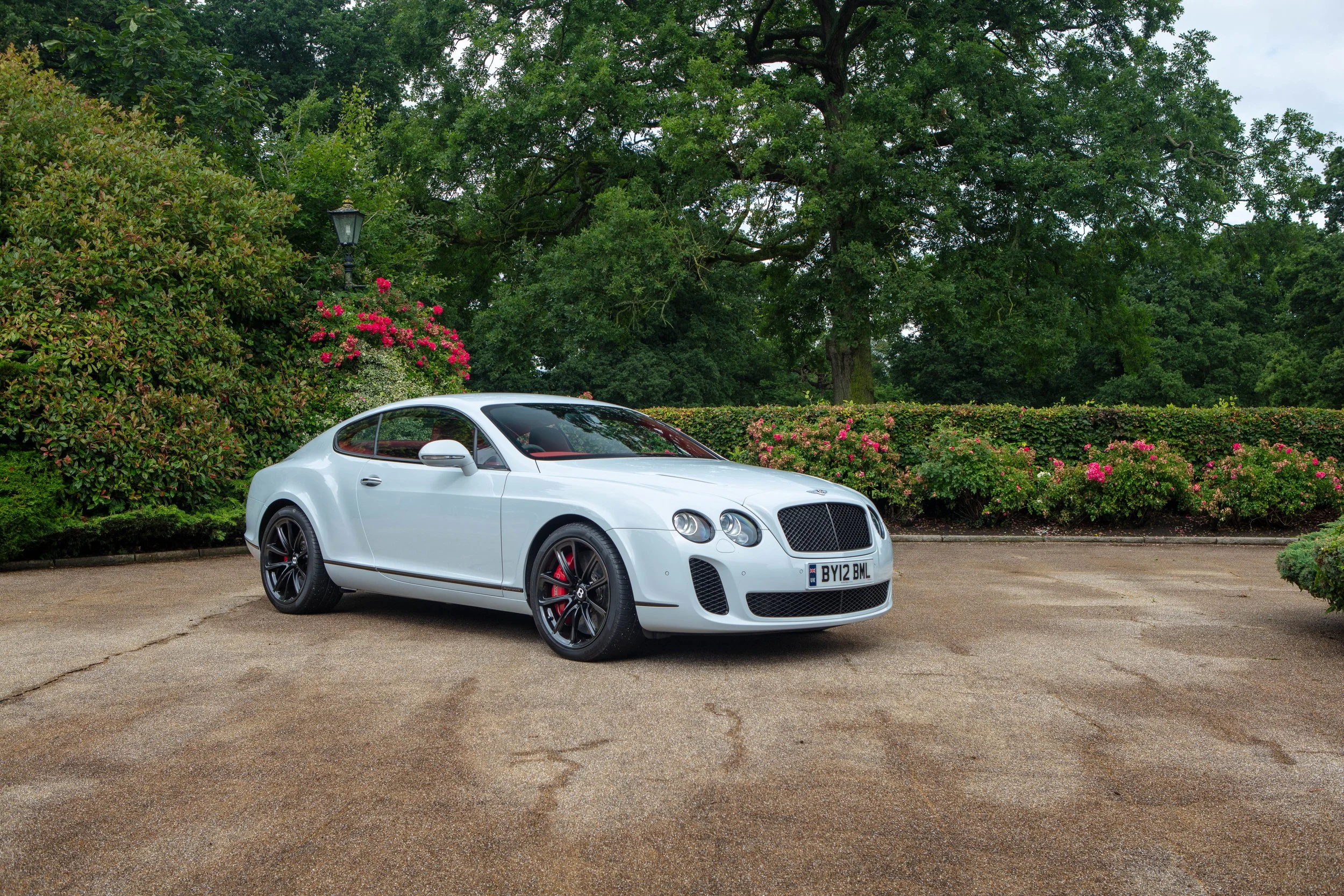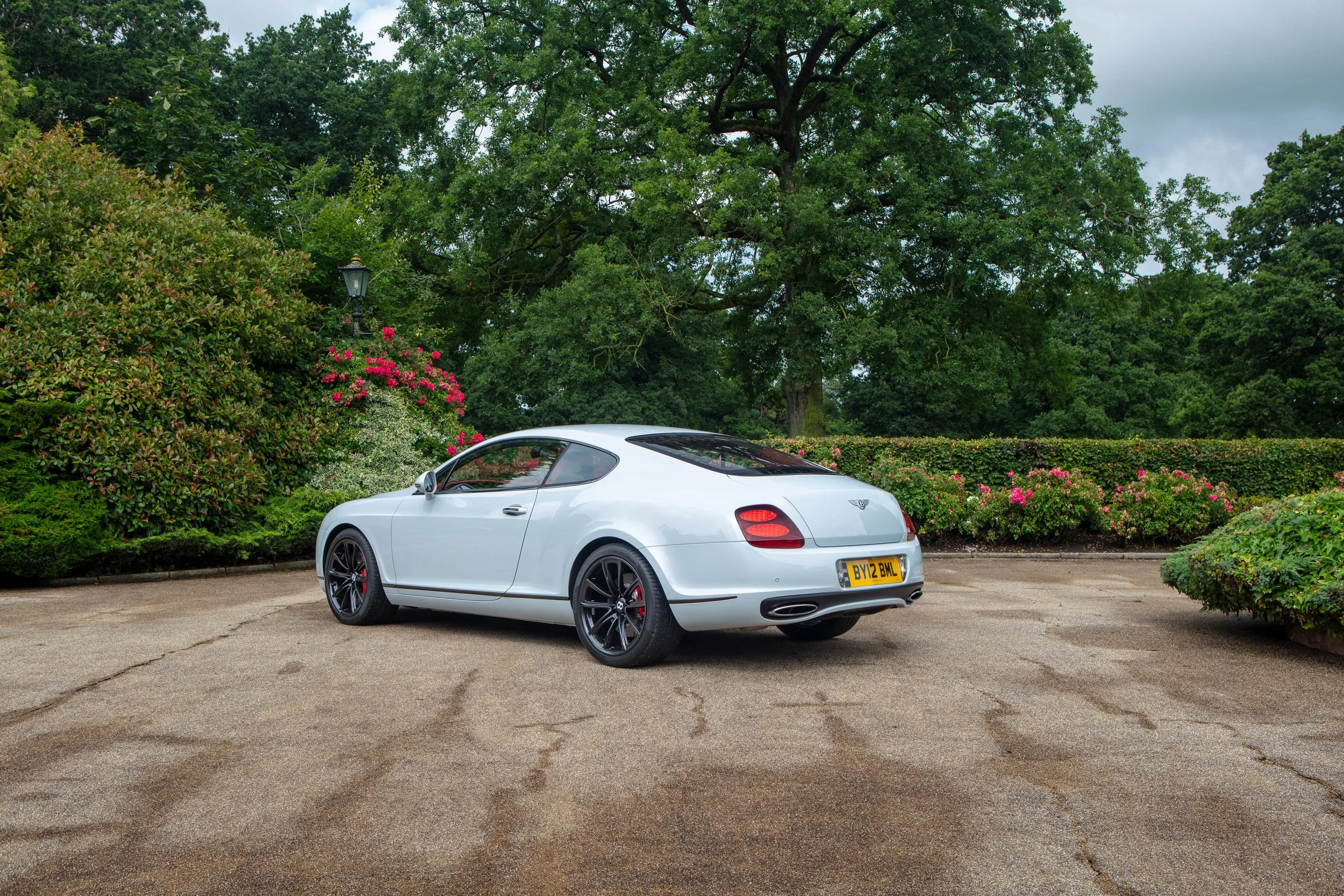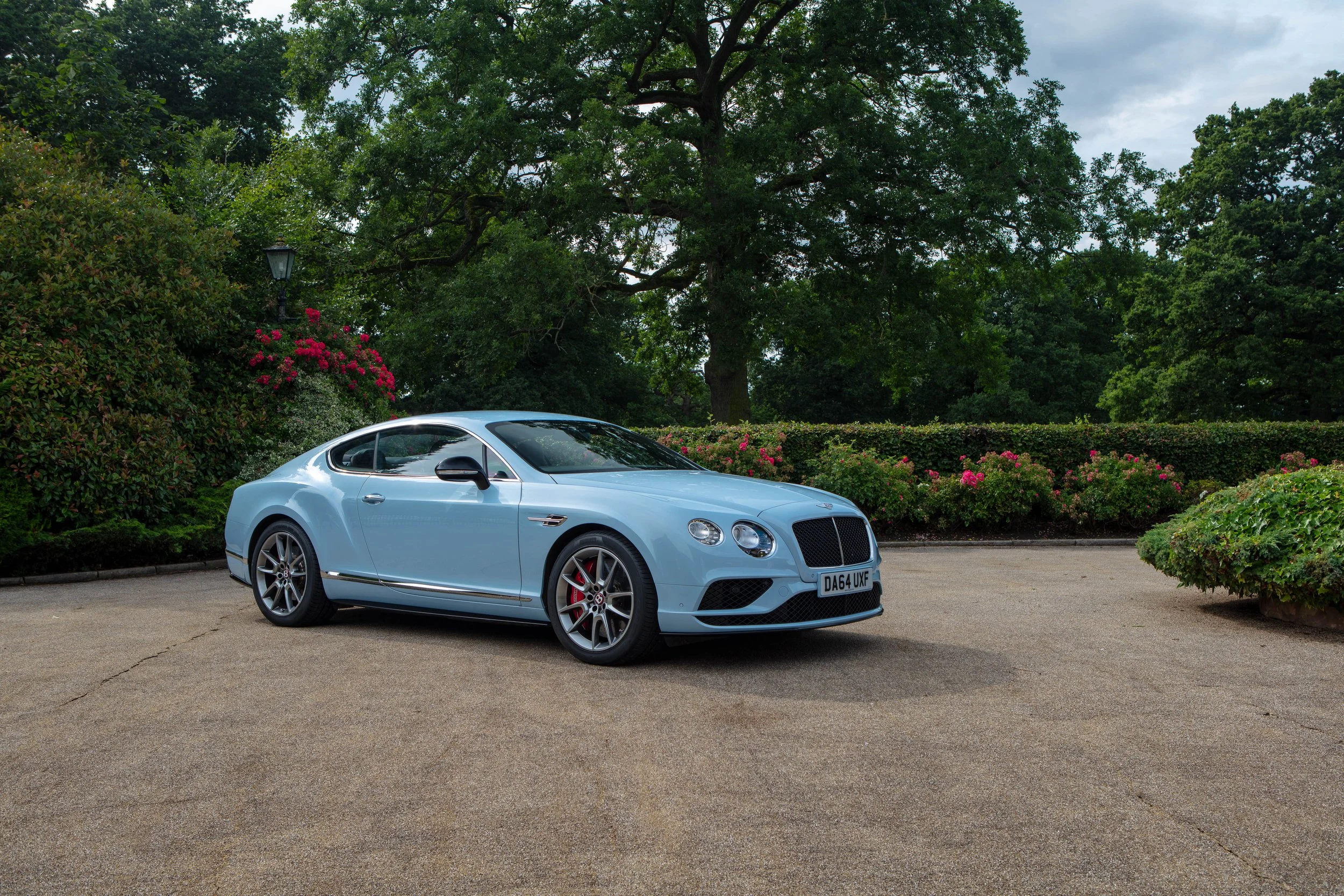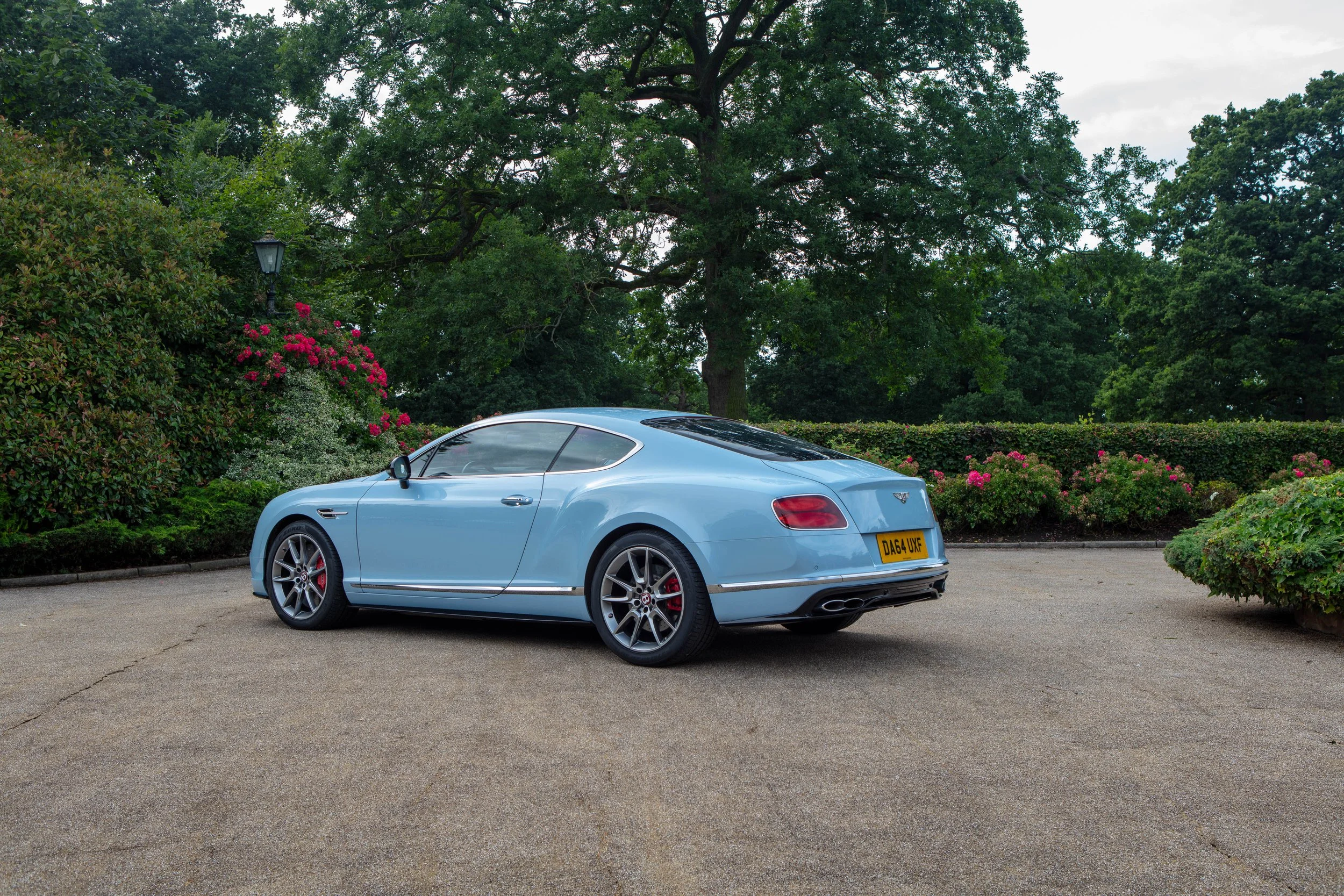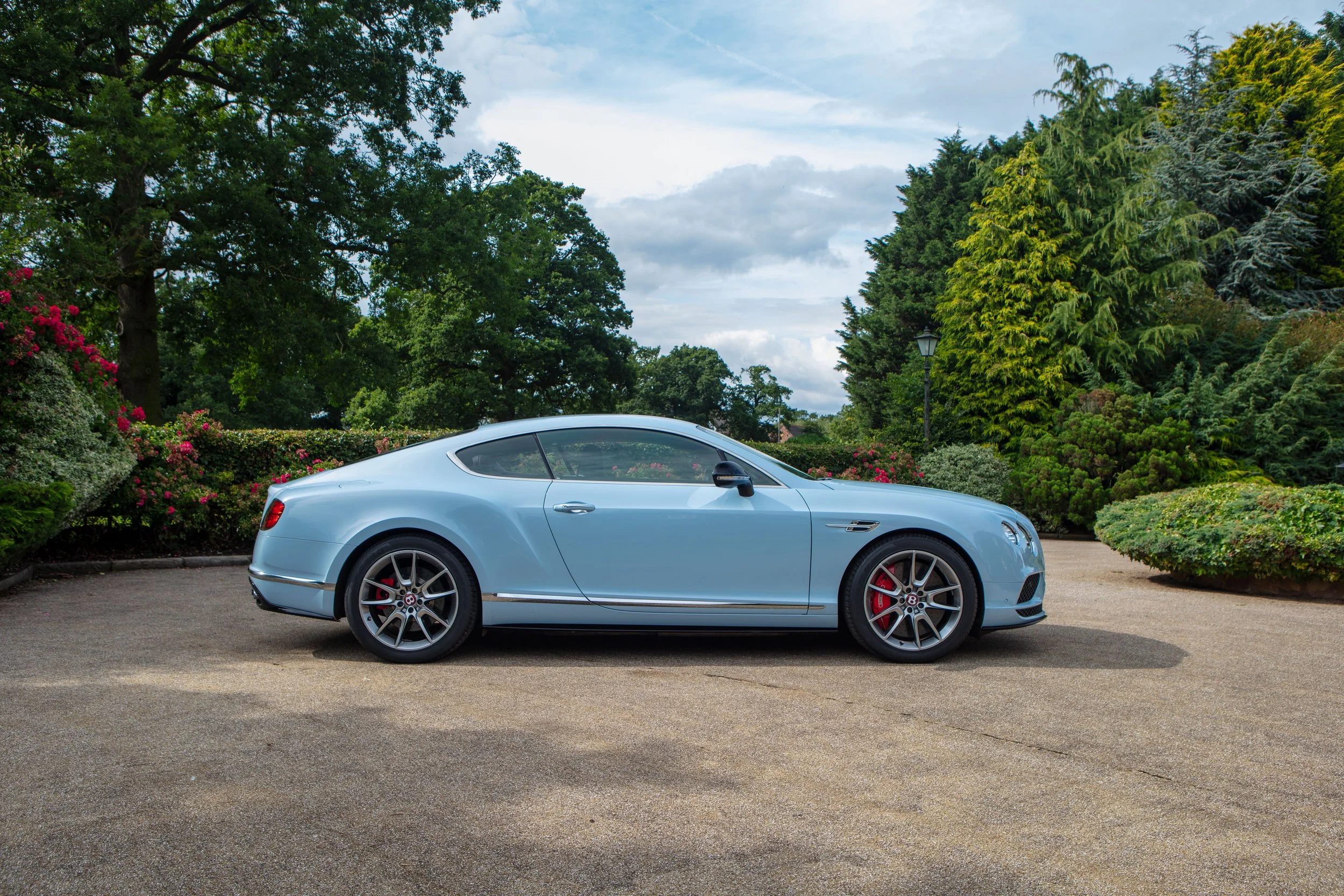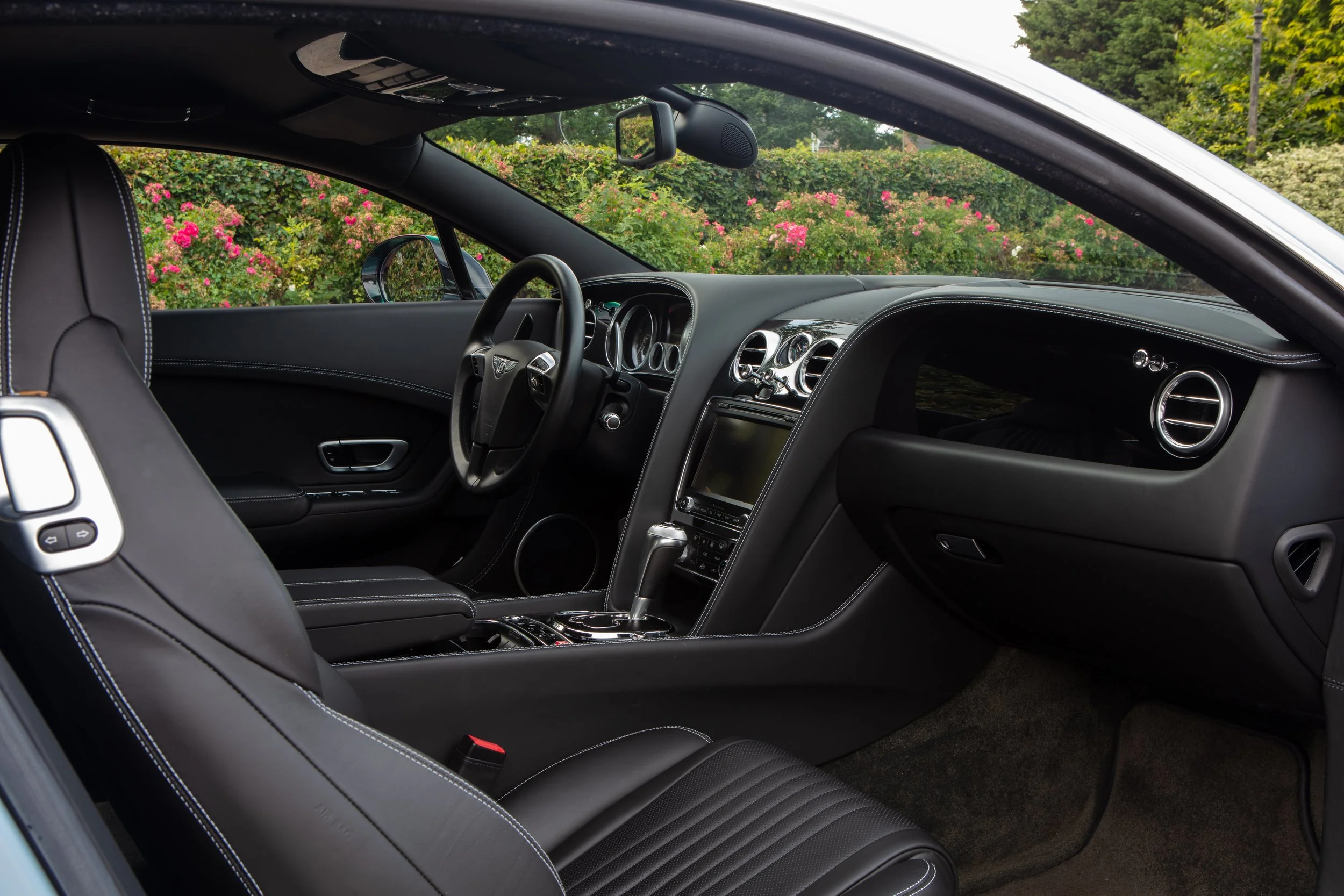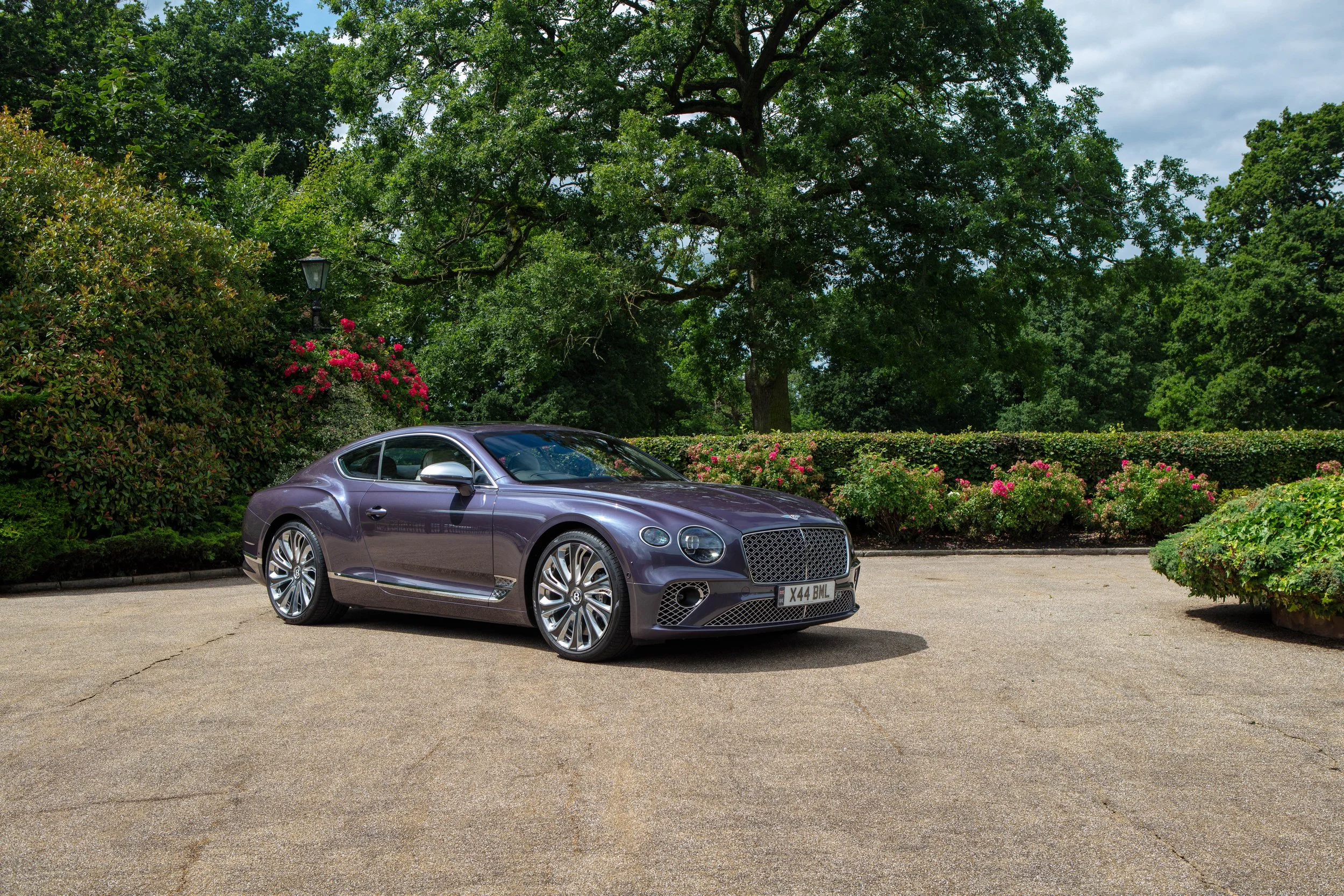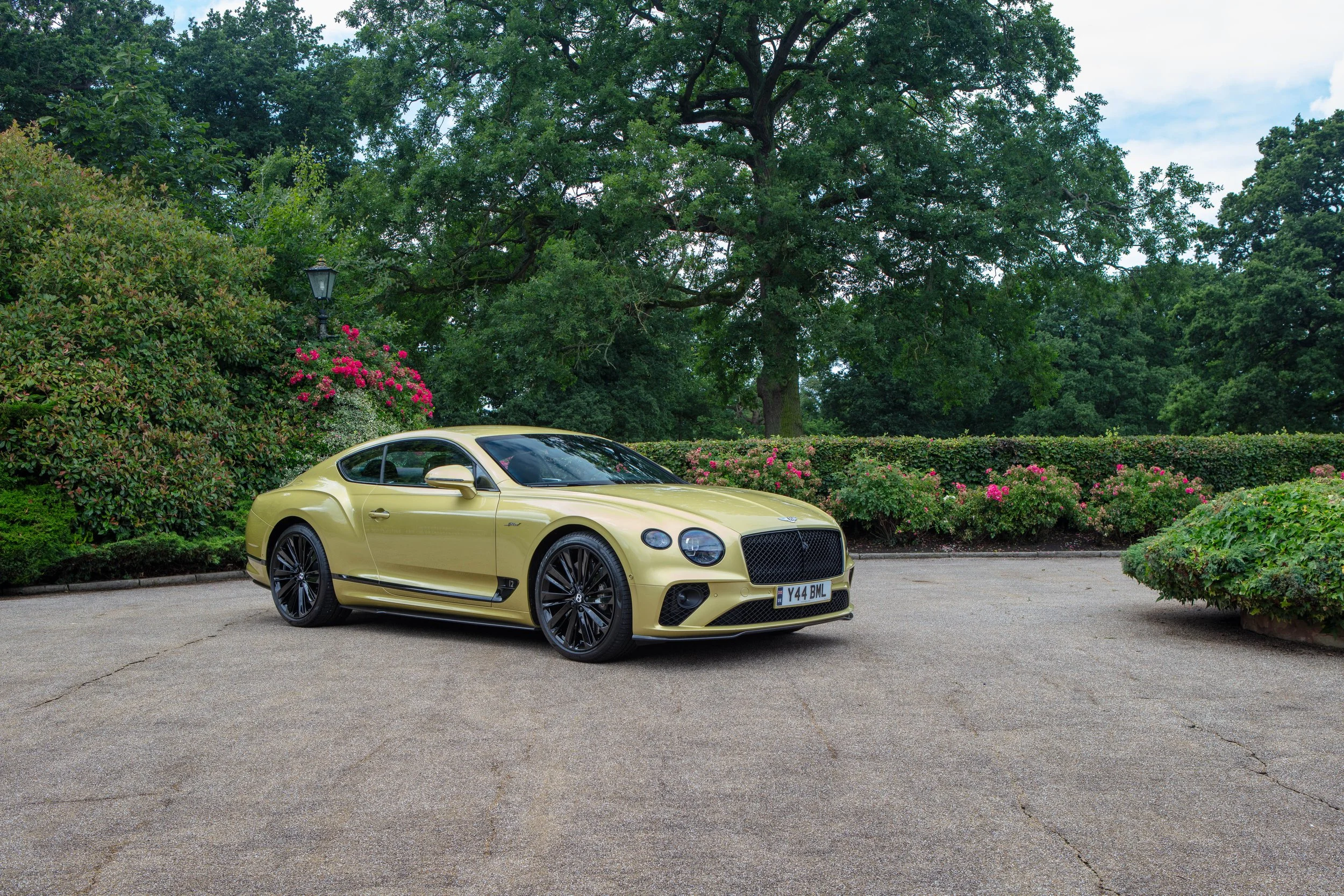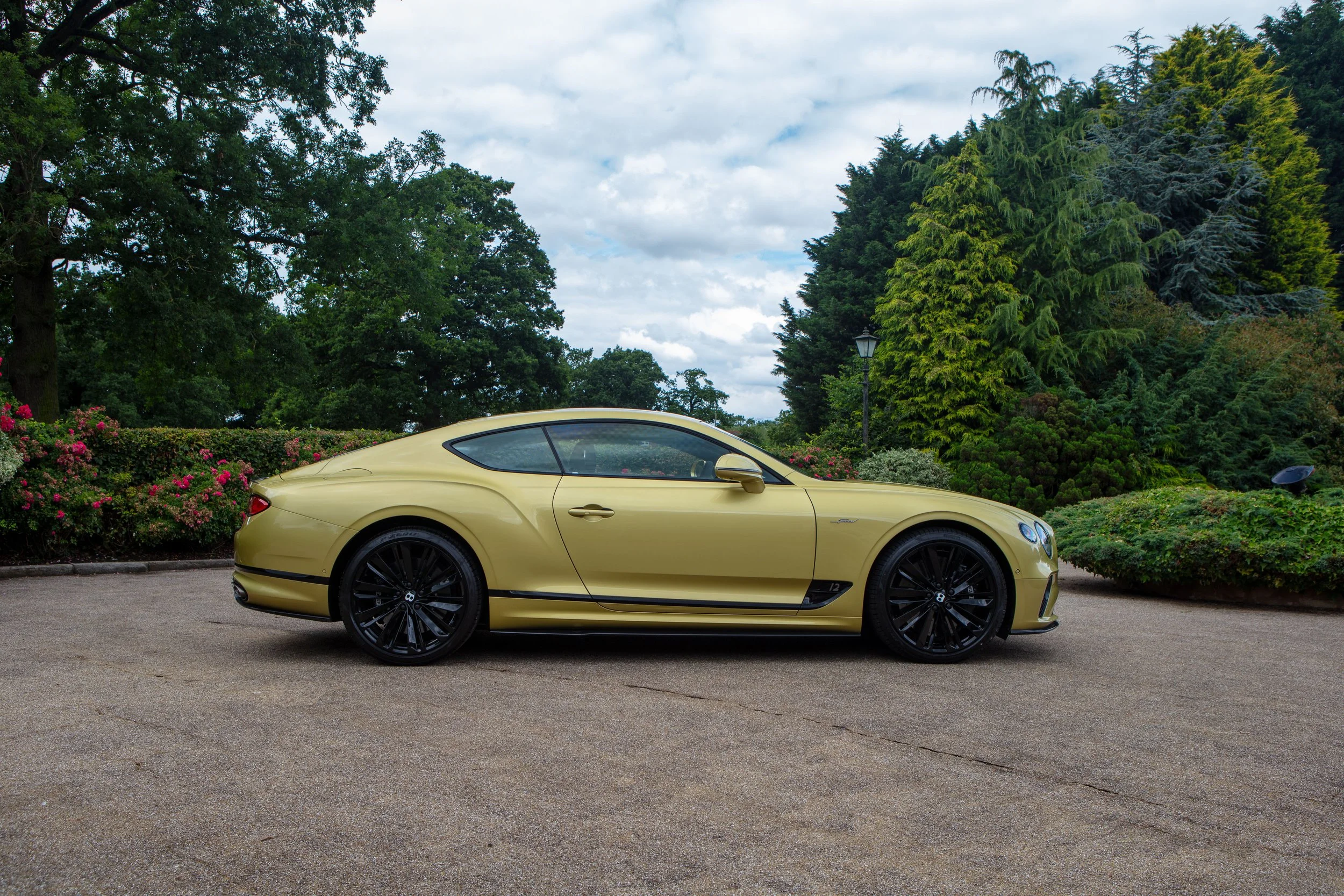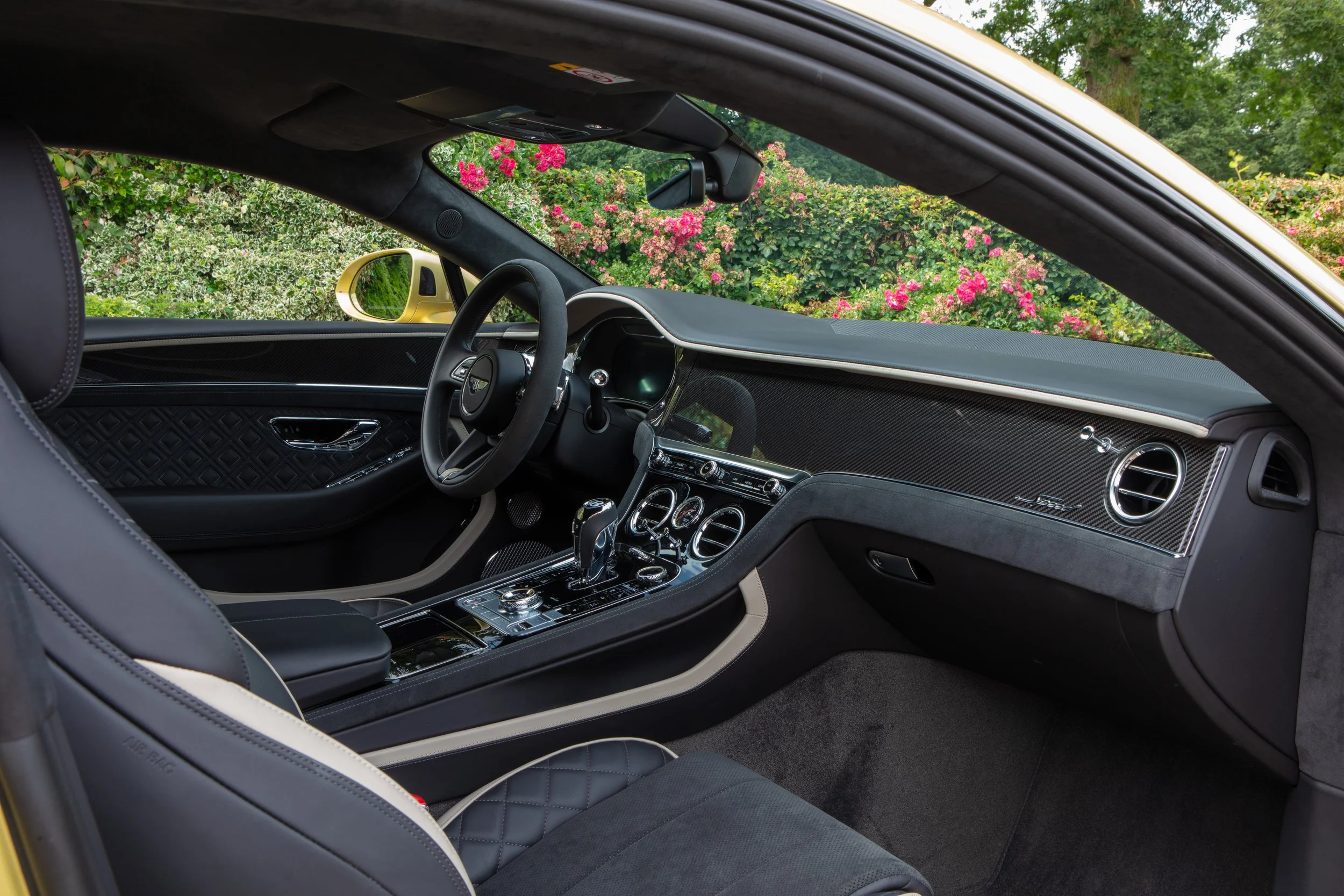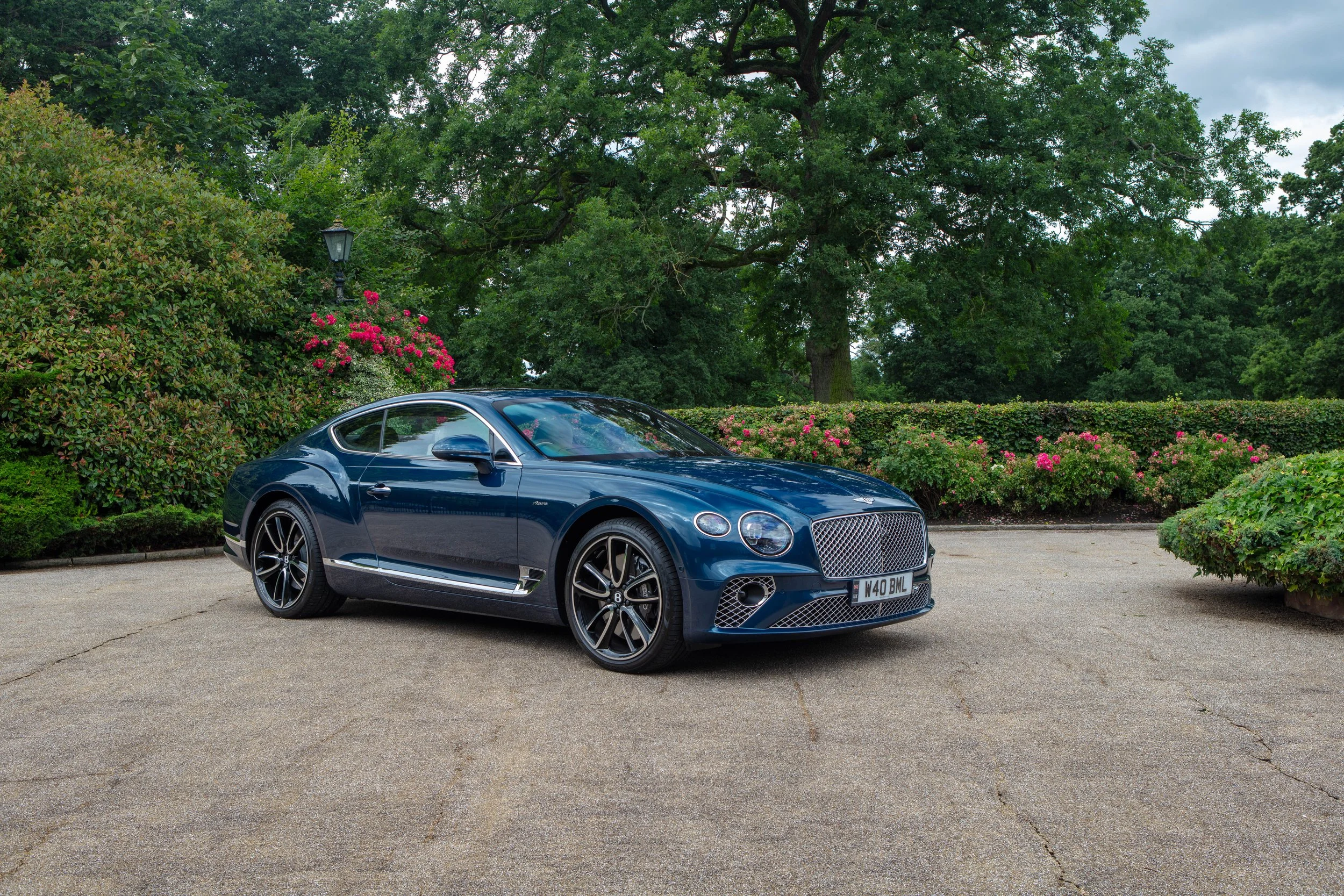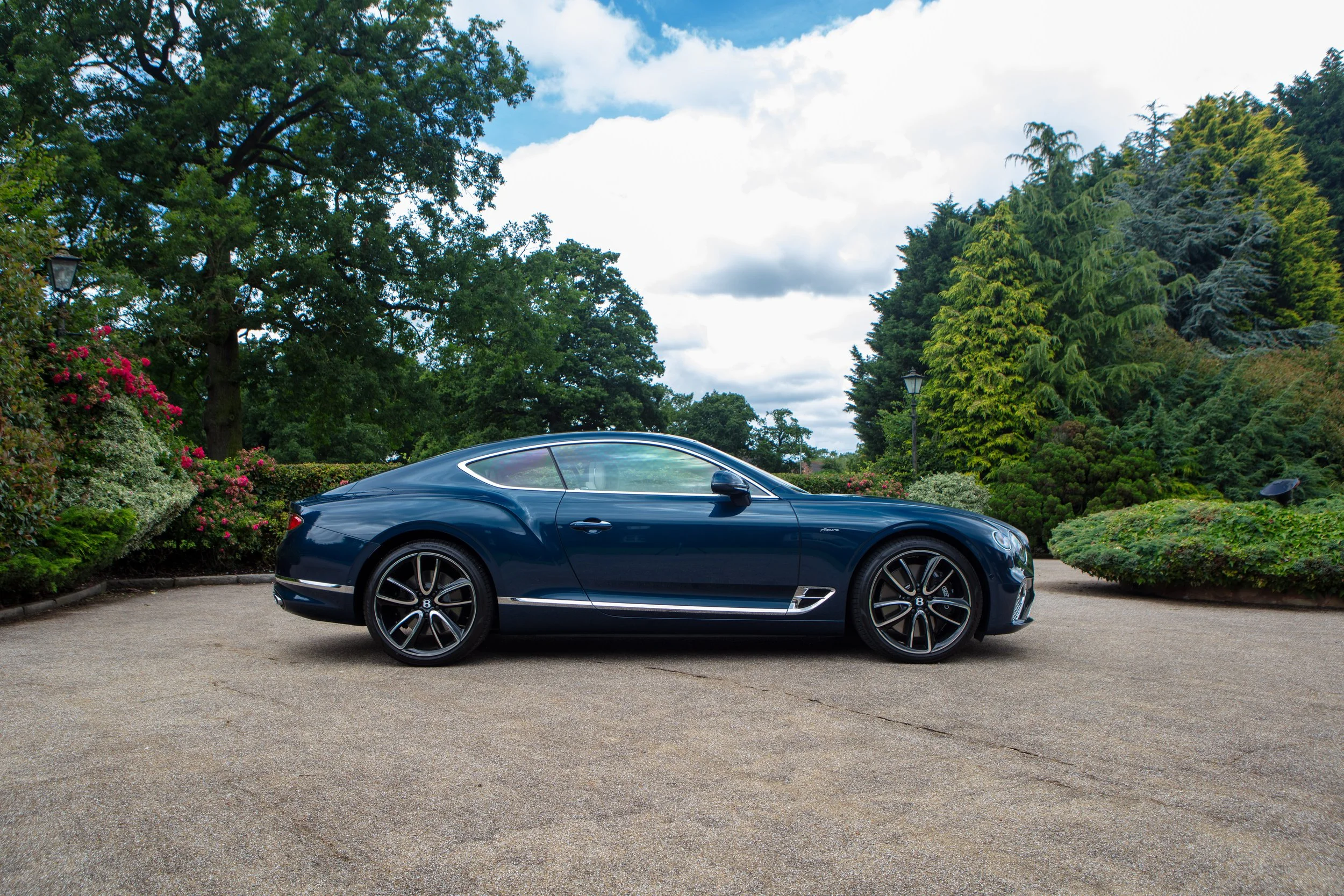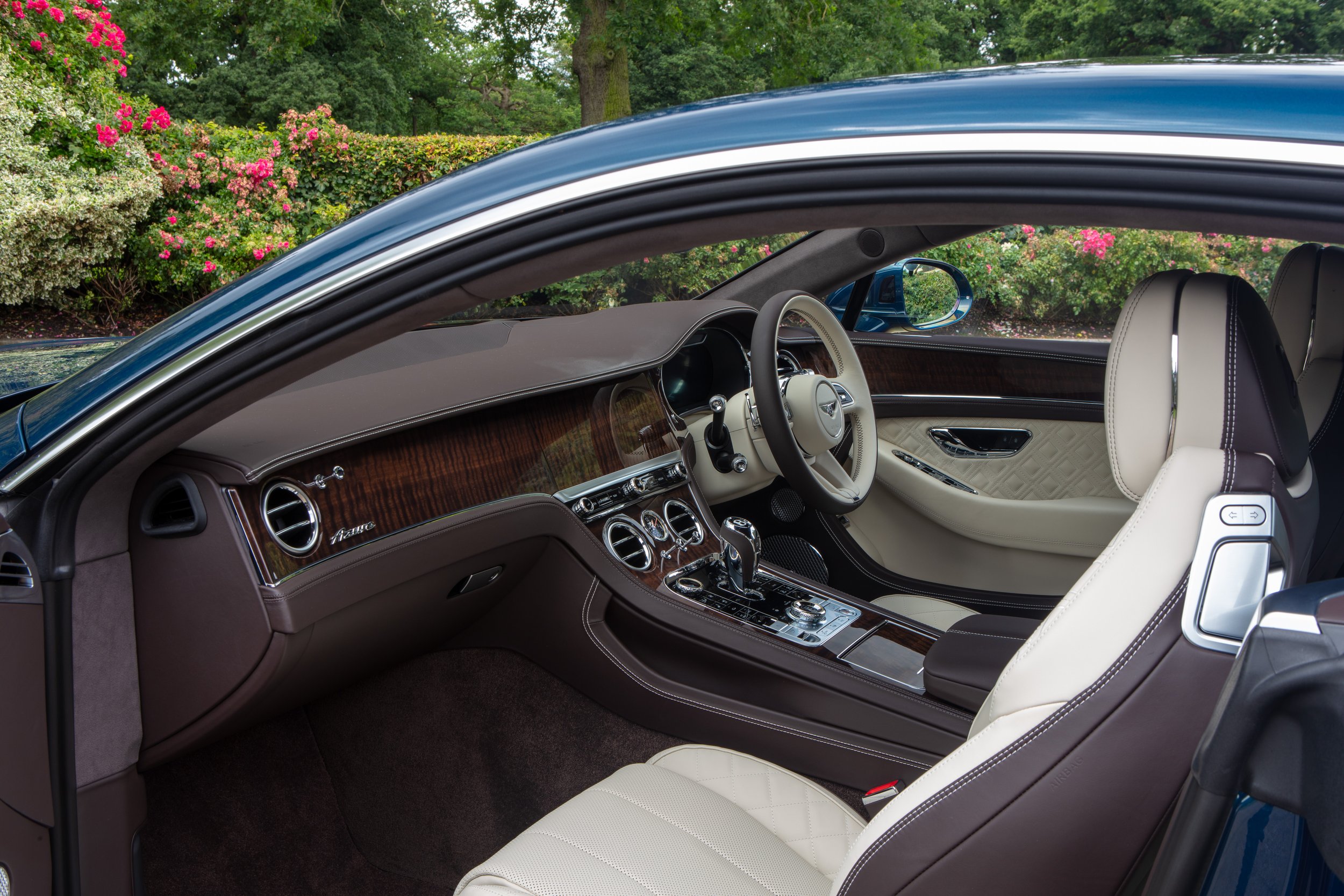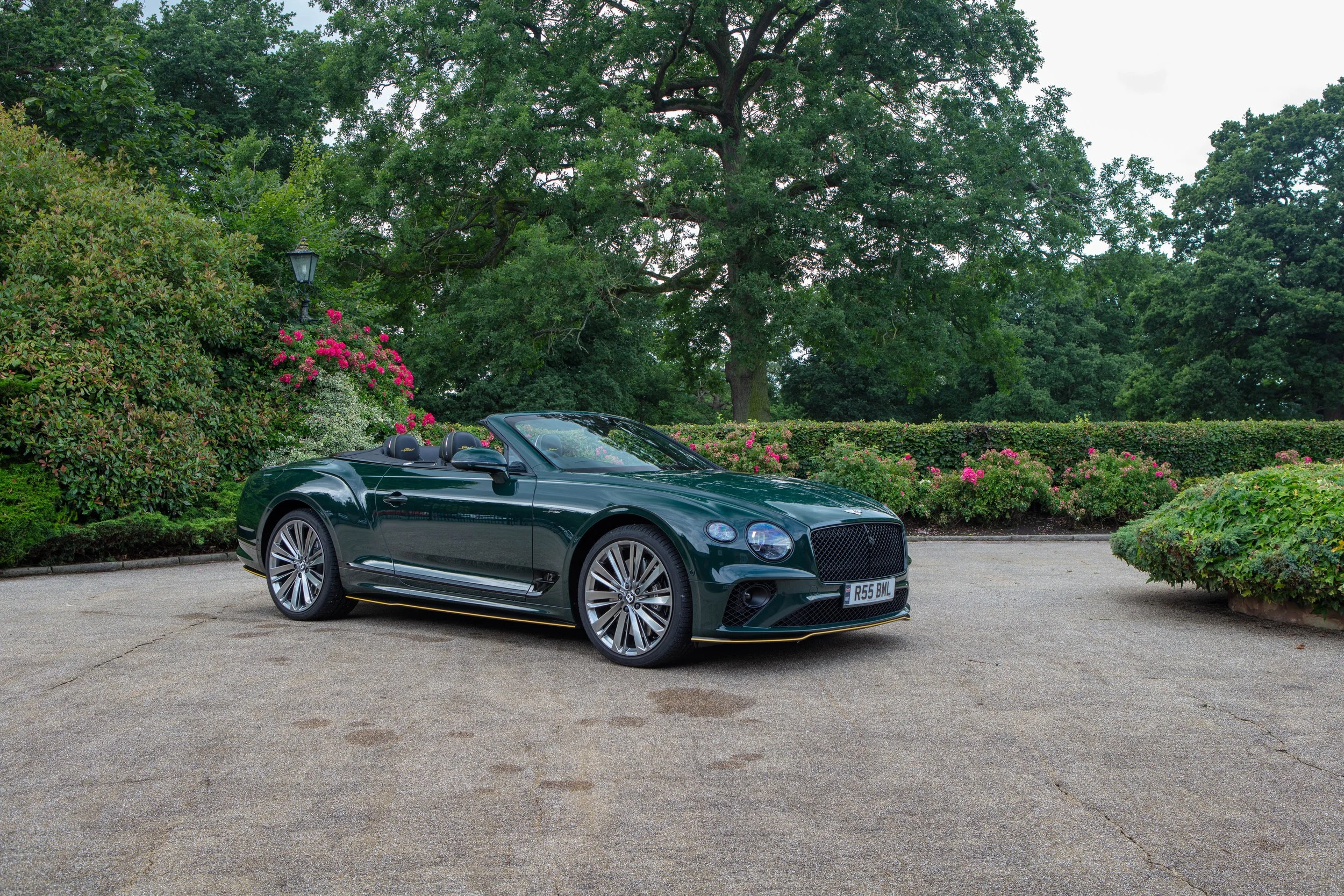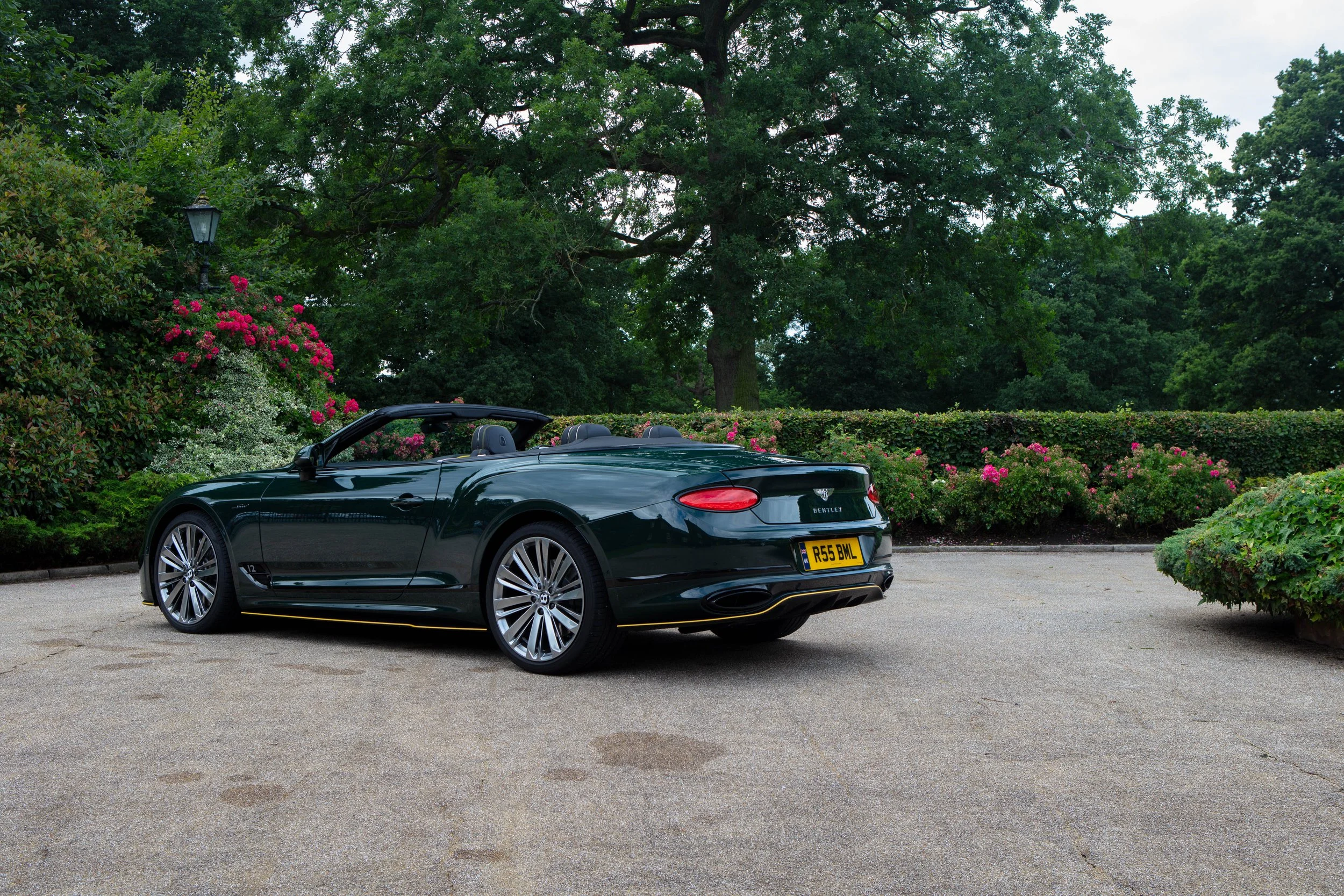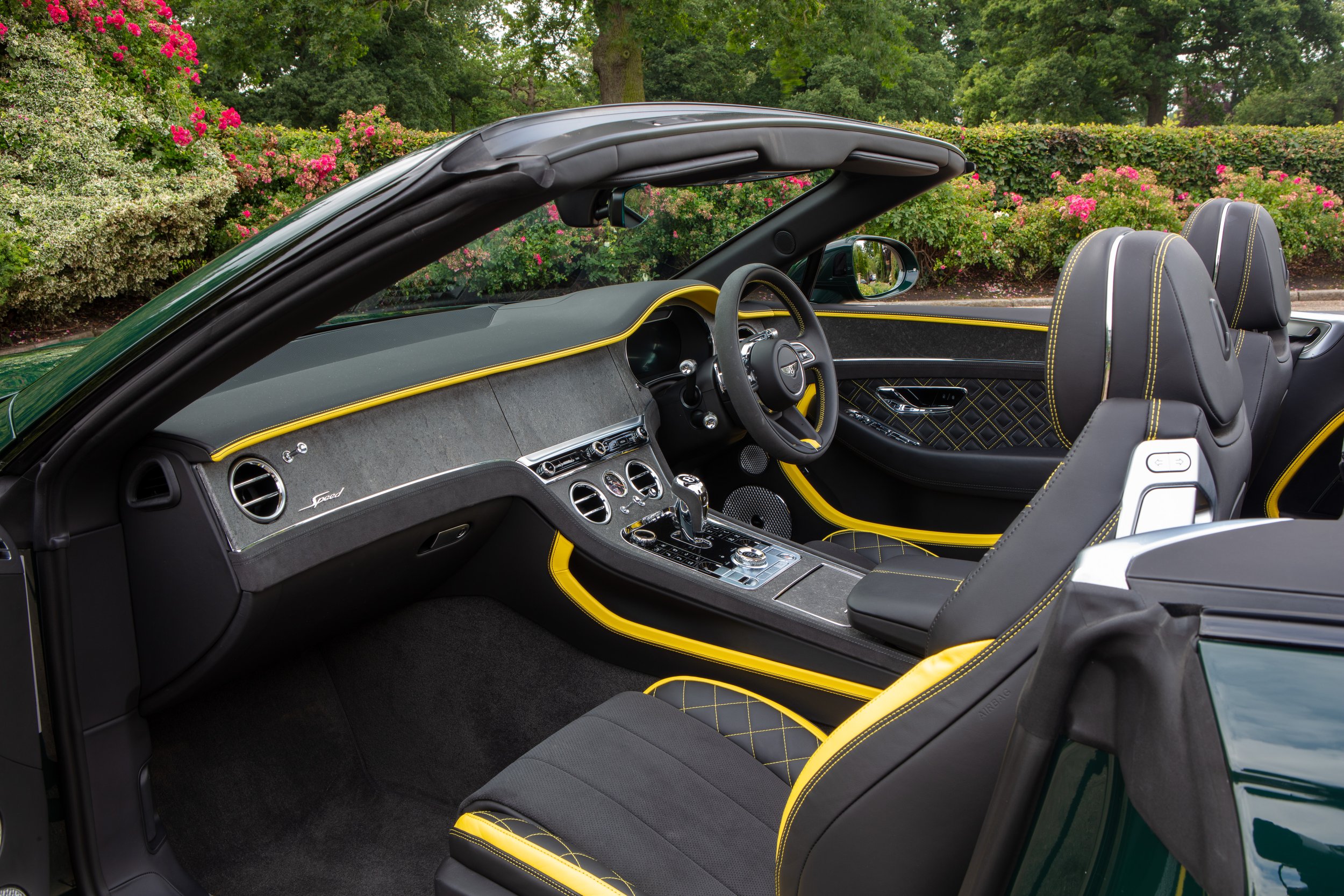FEATURE | 20 Years of The Bentley Continental GT
Depending on your age, 2003 either feels like it was an actual lifetime ago, or it feels like it was somewhere between 4-8 weeks ago. I turned 16 years old in 2003, and as it turns out, on reflection, it was quite a pivotal year for me personally. I walked out of Sixform College without a plan (or any A levels), I started working at my first full-time job in a garden centre, and I started, perhaps for the first time, thinking about the future with essential aspects like 'what should I get as my first car??'.
Whilst focussing on my own significant transitional period in my own little world corner of SW London, up in Crewe, the British institution and luxury car maker Bentley Motors was nearing the end of a transition in their organisation, too, with its new owners, the Volkswagon Audi Group.
VAG's purchase of Bentley had already taken place a few years earlier in 1998, and whilst the acquisition initially ruffled a few old English feathers, there is no denying that it was anything other than excellent for the Bentley brand with an immediate £500m investment going towards a full factory update and refurbishment of facilities.
Leading up to 2003, the Bentley factory in Crewe was rolling out around 400 cars annually - the Azure, Arnage and Continental. The VAG acquisition from 2003 would change this figure significantly by adding a zero - with more than 4000 cars leaving the factory production line within the following 12 months.
It was a new 'Mid-Sized' Bentley that was to kickstart this impressive new chapter for the company, and it would be the first all-new car with a Bentley badge on the bonnet since 1930. The new Mid-Sized car was, of course, later unveiled as the all-new Continental GT.
The design and engineering brief for the Continental GT first landed on the desks in Crewe in 1999, and it was extensive. The new Continental GT needed to change the perception of the Bentley brand and appeal to a broader market. The physical car needed to be sporty, on par with the Aston Martin DB7 and the Porsche 911 Turbo and to add to the challenges, the Continental GT had to be the most affordable Bentley to date. From an ergonomic point of view, it needed to be spacious, with room for four adults and their luggage, and perhaps most crucially, it needed to be designed, engineered and built in Crewe. One final task; it needed to be ready for market in just four years.
Three years later, at the 2002 Paris Motor Show, the Bentley Continental GT was unveiled as a prototype, and just six months later, it was revealed as a production car at the Geneva Motor Show. In the six months between the two motor shows, Bentley processed over 3,200 customer deposits to secure an early build slot. The new chapter for Bentley was well and truly underway.
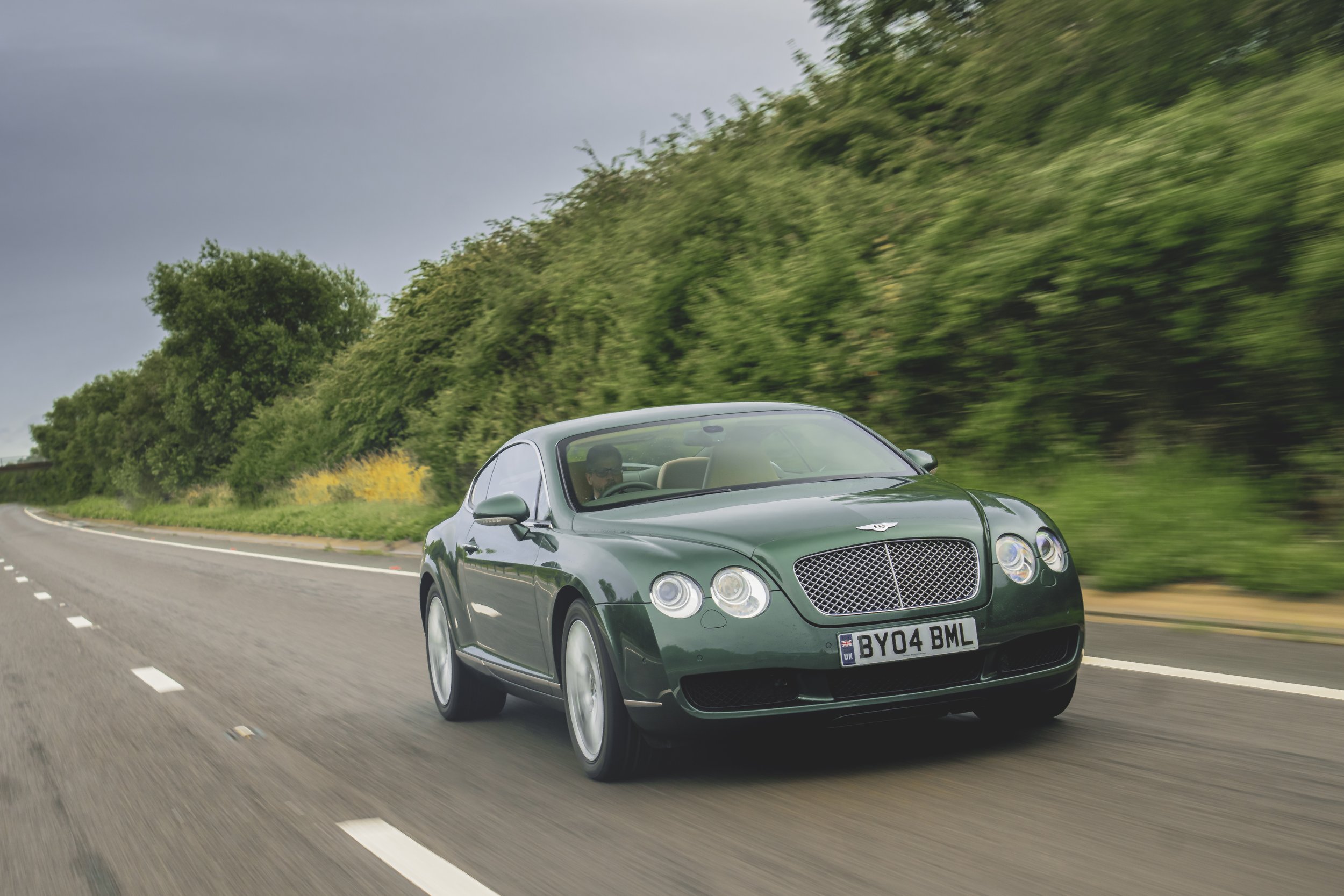
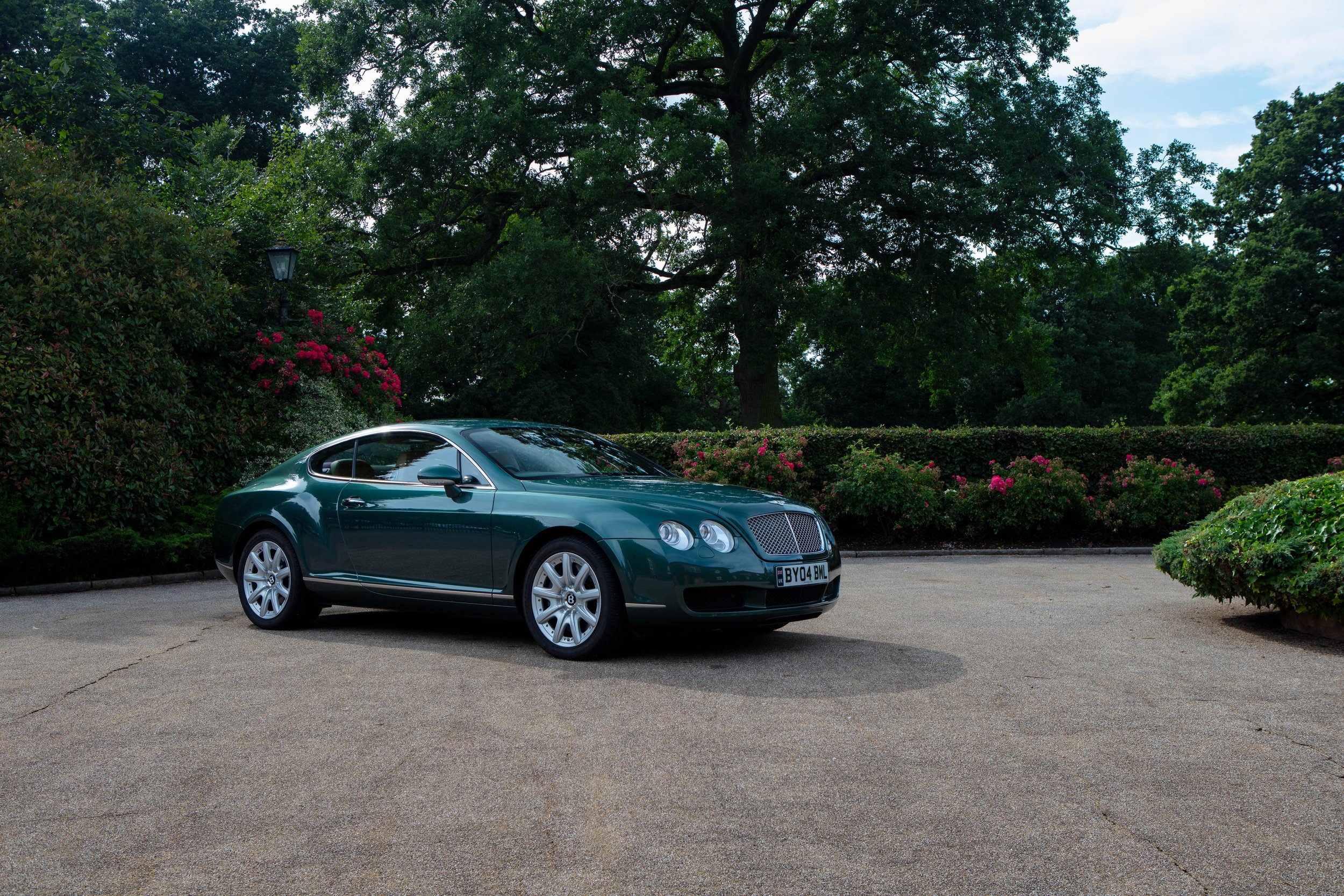
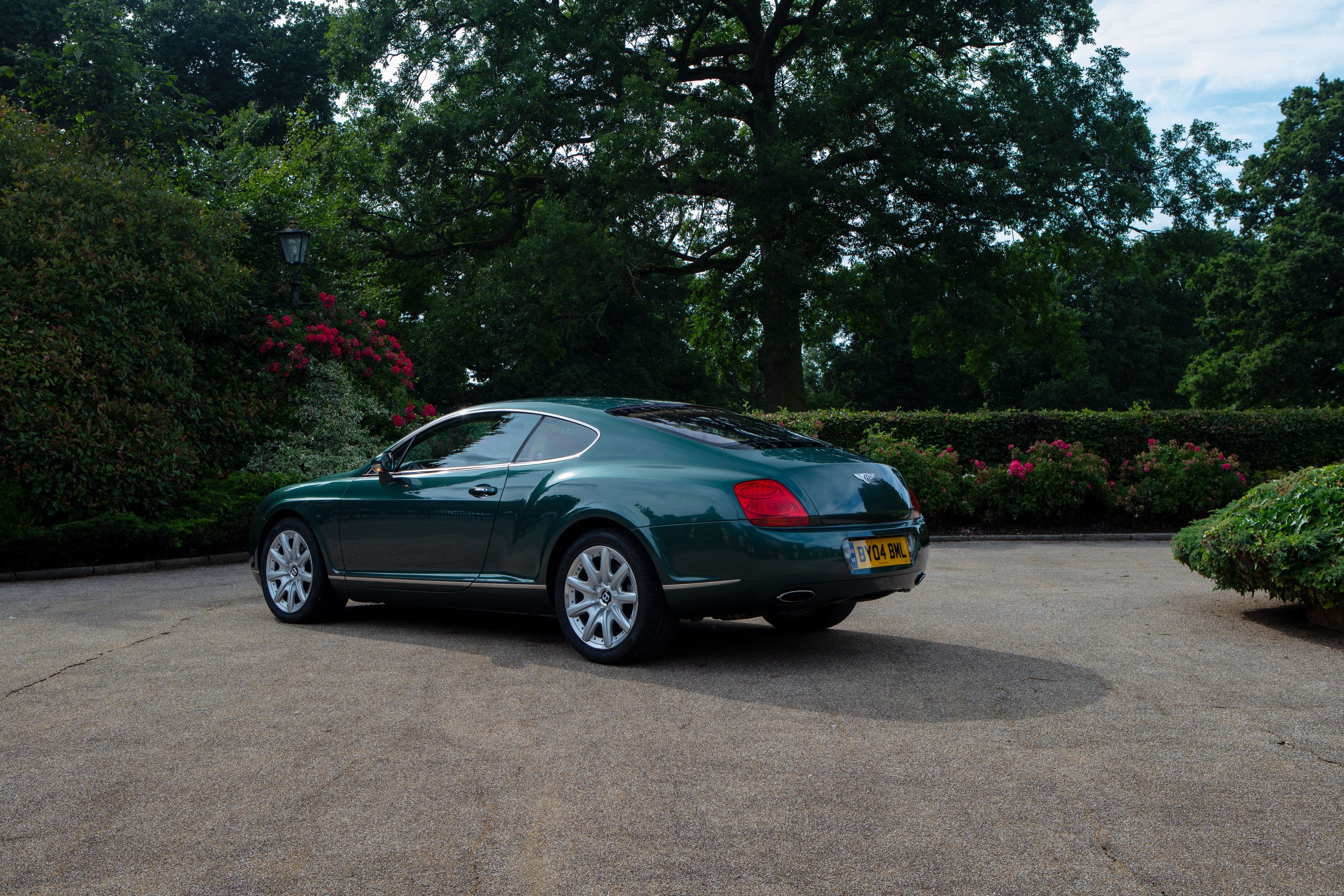
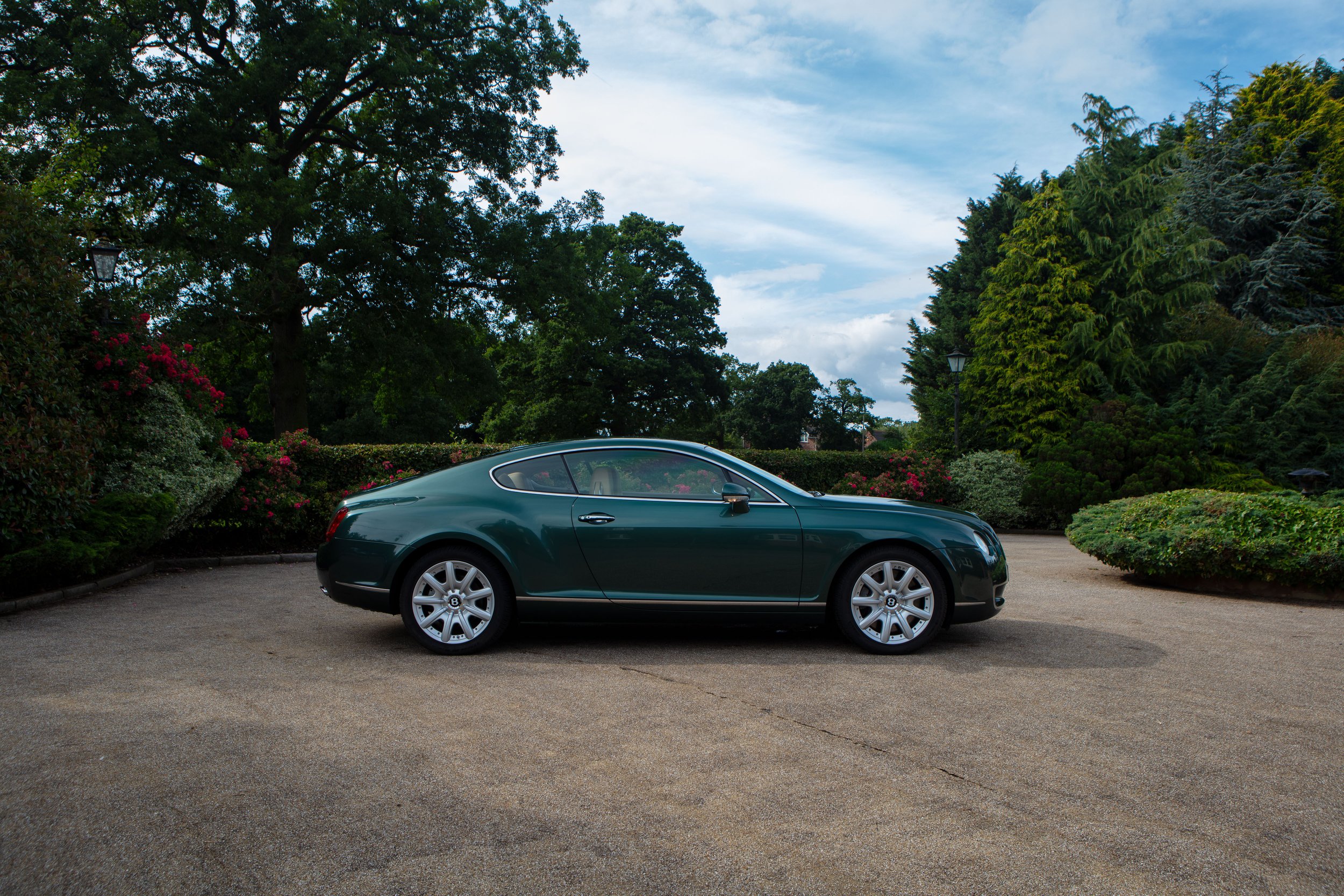
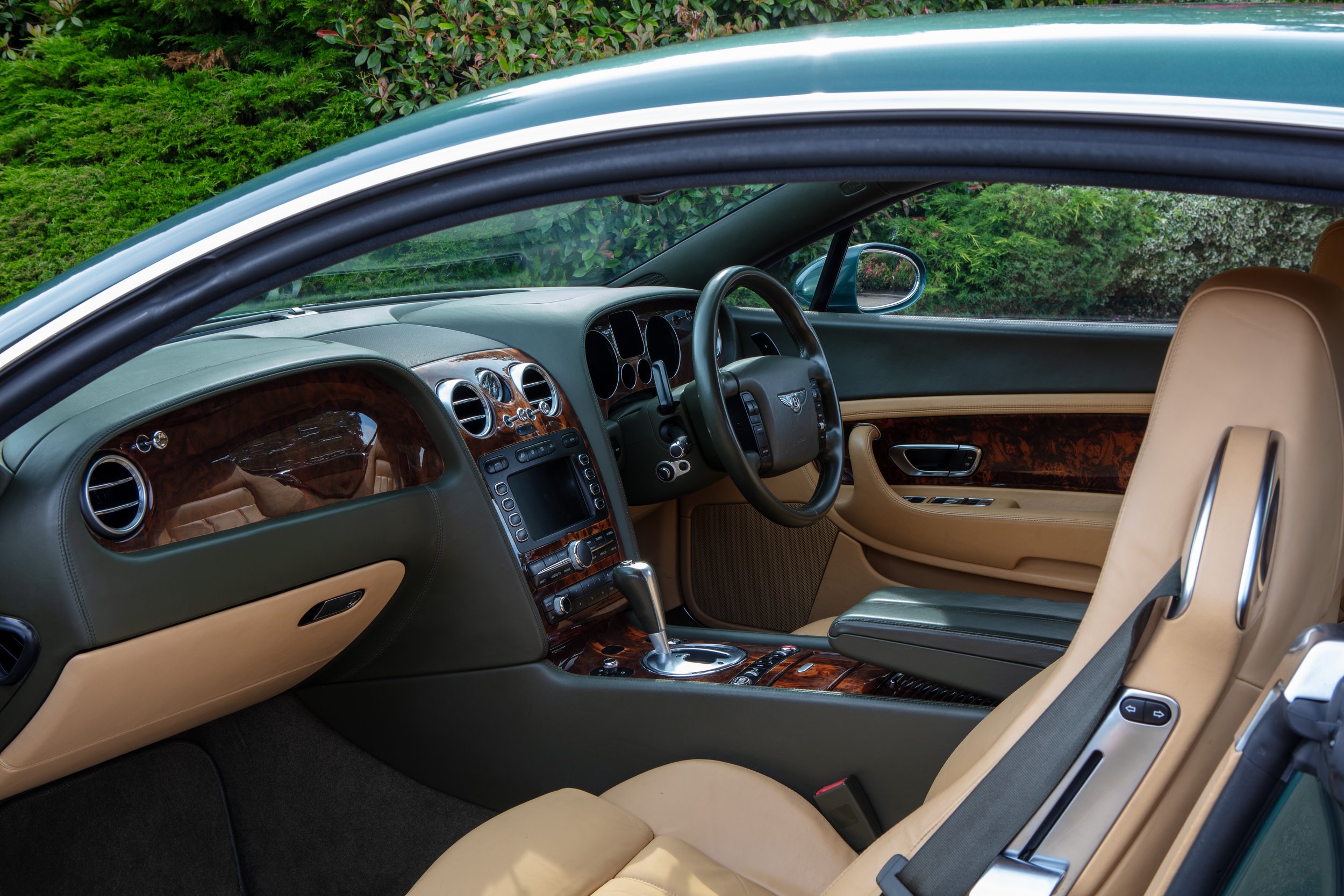
Per the design and engineering brief, the Continental GT was launched with a 6.0L W12 engine that delivered 550 BHP and 650nM of torque and rewarded an exceptionally staggering 198mph top speed. The Continental GT seated four comfortably and had a palatial boot space of 370 litres - enough for two complete sets of golf clubs. The fit and finish interior was also unrivalled, with handcrafted features using only the finest leather and wood veneers.
Following the initial deposits and customer deliveries, the orders continued to flow in. Between 2002-2003 Bentley produced less than 1,000 cars. In the 12 months that followed, that figure increased dramatically to over 7,000. By 2005 the figure had grown once more to over 8,000, and by 2007 the figure was 10,000 cars being built and sold yearly.
It's been 20 years since the now iconic Bentley Continental GT first appeared in the motoring world, and it will forever be known as one of the most significant success stories for a motor manufacturer ever - and for a good reason, I should add.
In my varied automotive focussed media career, I've been fortunate to have more than my fair share of seat time in Bentley products. In terms of Continental GTs alone, I've enjoyed many a short drive in first-generation Continental GTs cars, I drove a second-generation Continental GT around Europe, and I raced the sun from John O'Groats in Scotland to Lands End in Cornwall on Summer Solstice back in 2021 in a third-generation Continental GT V8 Speed. Elsewhere in the Bentley back catalogue, I’ve driven and reviewed Phillip Green’s old Arnage, driven a 3000-mile road trip around Europe in a first-generation Bentayga, and I’ve even driven a 1929 Pre-War Blower Bentley at Le Mans and then back to the UK. More recently, I’ve had a 10-day press loan in the latest and greatest EWB Bentayga ...oh, and the Mulsanne - how could I forget the Bentley Mulsanne? So yes, I've admittedly had more than my fair share of seat time in exquisite cars from Crewe. Still, despite the plenty of experiences so far, I will never turn down an invite to drive a Bentley. So when I was recently invited to Bentley's Country Residence, just a short drive from the factory, to celebrate the 20th anniversary and sample a collection of Continental GTs, naturally, I was delighted to accept.
DRIVE #1 - Bentley Continental GT Supersports (First Generation)
I opted for my first drive of the day to be a car I've somehow never actually driven. It was the first dedicated high-performance model offered in the form of a Continental GT, and it was aptly named: The Continental GT Supersports.
The Supersports arrived six years into the new age of Continental in 2009, and the intention behind the special edition was for it to be a lighter, faster and more engaging Continental GT experience. The engineers squeezed a very impressive 630bhp from the 6.0L W12 and then shaved off an equally impressive 110kg of weight by replacing and removing parts. Lightweight carbon bucket seats replaced the heavy electric driver and passenger seats, and the rear seats were deleted in place of a substantial carbon fibre strut brace. Lighter 20" wheels replaced the standard wheels, and the chassis and drive train was reworked considerably to reward a lighter feeling compliant sports ride while maintaining all the fundamental powerful capabilities of the Continental GT.
Having not driven a Continental GT Supersports until this point, I assumed that a 2009 performance car in 2023 would probably feel a little old hat. I was wrong.
Despite being a 14-year-old car, the Supersports felt refreshingly - fresh. There is no hiding the fact that a Continental GT is a heavy car, and yet the Supersports feels somehow light and spritely. The geometry feels comparable to a modern super saloon, an RS4 Audi perhaps. The steering and brake feel were equally surprising too. I've driven far newer performance coupes that felt considerably less engaging.
The Continental GT Supersports provided an exhilarating first drive and almost gave my second drive, a left-hand drive gen2 car, a pretty hard act to follow.
DRIVE #2 - Bentley Continental GT V8 Second Generation
Following the global success of the first generation car, when Bentley launched its second Continental GT in 2011, customers' reactions and consumer demand were unsurprisingly positive. The external shape of the car was updated with new lights, a more muscular body shape and a slightly wider stance. The interior was also given an extensive overhaul with new seats, a reworked dashboard interface and some technology upgrades to surpass the competition.
Despite ultimately being a comprehensive facelift, the second-generation GT does feel like a significantly different car compared to its predecessor. The modernised interior and updated switchgear give enough of an illusion that it's an entirely new car. The second-generation GT was launched with the same W12 powertrain as the Gen-one car, and a year later, in 2012, the Continental GT was available to order with a smaller and slightly more economical turbocharged V8 engine option.
The new V8 engine was a good thing for Bentley as it grew the customer base further by opening the marque to a new market of drivers. The new V8 was marginally more affordable than the W12 and offered a slightly more frugal fuel economy while retaining an ample 500bhp.
On my drive in the 2014 model year car, I was reminded of a dramatic drive home with a close friend from the 2017 Geneva Motorshow in a Continental GT V8. Instead of taking the direct autoroute back to the UK, we took the V8 Continental GT home via a selection of snowy Alpine routes and then a slight detour to the Nurburgring before thundering our way back on the autoroutes through France and Belgium. It was during this trip that I concluded for the first time that there was probably no better GT car than the Bentley Continental GT.
My short refresher drive back on the local roads near Crewe reminded me of the sheer brilliance of the V8 powertrain. It is an impressive soundtrack, and the power delivery is sublime. The second-generation GT gave a similar experience to the first-generation Supersports - in that you could be easily fooled into thinking you were driving a car that rolled out of the factory just nine months ago as opposed to nine years ago.
Second-generation GTs are a reasonably common sight on UK roads, and it's easy to see why. They still look great, drive brilliantly and have exceptional road presence.
DRIVES #3, #4 & #5 - Bentley Continental GT W12, V8 & W12 Speed Convertible (Third Generation)
In 2018, the 3rd generation Continental GT arrived, and it did so with a completely new platform. The car was a ground-up new car sharing only one solitary component with the second-generation model (the rear window motor - if you are wondering). Design and aesthetics were again upgraded in spectacular style, and the 3rd Continental GT was once again an immediate hit globally.
As before, in the second-generation car, at the time of the launch, customers had the choice of the W12 or a V8 engine; however, following the results of customer demand and looking ahead to the future, production of the W12 engine is due to end by April 2024, leaving future versions of the third-generation GT and beyond to be exclusively V8 powered - for now, at least until the plug-in hybrid model makes an appearance.
I sampled a total of three third-generation gen cars on the day.
A W12 Coupe with an optional Akrapovic exhaust system finished in Julep paint with a Beluga leather and Alcantara interior.
Second up was a Windsor Blue with Chrome V8 Azure finished with the most glorious linin and dark oak leather paired with a Eucalyptus veneer.
My third Gen-3 car was a Convertible W12 Speed Edition, in the colour of Barnato with blackline trim which had a couple of exceptional features, including rear-wheel steering for sharper handling and cornering, an upgraded electronic differential for better power delivery and a feature on the interior unique to both the car and the Bentley marque—a stone veneer.
The stone veneer is a feat in its own right, with Bentley taking extreme pride in its interior finish. If a customer specifies wood veneer, then what's delivered is one large book-matched piece which stretches from door to door, sliced only to accommodate the gaps between the door cards, centre console and dashboard. Suppose a customer were to choose carbon fibre; in that case, only the most consistent and high-quality carbon weave finish is applied to the interior. Likewise, the metalwork options now range from brushed aluminium to precious metals. If the customer specifies stone veneer, the customer is given a 200 million-year-old piece of stone, sliced to a thickness of just one-tenth of a millimetre before being installed into the car. And yes, you guessed it, it's book-matched for consistency, meaning the stone you can see and touch is one large piece stretching from one side of the car to the other. It is, in a word - exquisite.
My day with Bentley was a very apt reminder that the best, most luxurious and most capable grand tourer is still the Continental GT.
Despite overseas company ownership and strategies that altered the marque's exclusivity, the Bentley brand still sits atop the pile for practical, reliable and comfortable luxury in the form of a grand tourer.
I have little doubt that the Bentley Continental GT will live on for another 20 years comfortably. They may not have 12, 8 or perhaps any cylinders at all, but you can be sure it'll be the best grand tourer you can buy.
Happy Birthday, Continental GT.
words: John Marcar
pictures: Bentley Motors
Fancy a little more Bentley Content?
READ: REVIEW | The Bentley Bentayga EWB - Time to eat my words?
WATCH: Is a 2005 Bentley Arnage T a cool car?
WATCH: REVIEW | The Bentley Mulsanne Speed - The last true Bentley Limousine?
WATCH: The #BentleySunRun - Racing the Sun in a Bentley Continental GT Speed















